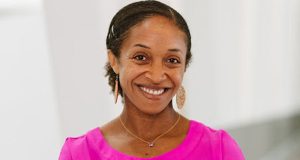By Neil Armstrong
PRIDE Contributing Writer
TORONTO, Ontario — The Ontario Alliance of Black School Educators (ONABSE) will soon strategize and decide on its next course of action in response to a report it commissioned which found that systemic anti-Black racism is still entrenched in the education system.
This not only hampers the hiring of Black teachers, it also retains significant barriers in the promotion and advancement of Black teachers, and has very serious repercussions within the classrooms.
On May 29, Voices of Ontario Black Educators: An Experiential Report was released at the organization’s first annual conference held at the Ontario Institute for Studies in Education, University of Toronto.
Based on research conducted by Turner Consulting Group Inc., the report calls on the provincial government to enact employment equity legislation in an effort to combat this persistent problem that is not only affecting teachers but students as well.
“We want to engage the different stakeholders in looking at some ways to address the concerns that were highlighted in the report,” said Warren Salmon, interim president of ONABSE.
Among the report’s findings is that while racialized people represent 26% of Ontario’s population, they make up only 10% of the province’s 70,520 secondary school teachers, and 9% of the 117,905 elementary and kindergarten teachers.
“It is critically important that the provincial government take action on this research report,” Salmon said. “This report highlights the need to remove discriminatory barriers to the hiring and advancement of Black and other racialized educators. We believe that the teaching workforce should be more reflective of the student population.”
Education Minister, Liz Sandals, was invited to the conference but she was unable to attend but ONABSE intends to take the report forward to the ministry and to the Toronto District School Board.
“Public policy helped close the gender gap in education. If the government wants to close the gap in racial diversity between students in the classrooms and those at the front of the room, legislation and other government interventions may also be needed,” said Tana Turner, author of the report.
She said there is a big demographic gap between the students in the classroom and the teachers in the classroom. Turner said similarly to how the government closed the gender gap for women, it needs to do the same thing for teachers, for teachers of colour, and then specifically for Black teachers as well.
The two main things are about being non-discriminatory and about what Black teachers bring to the classroom.
“The last section was around the value that Black teachers bring to the classroom and if the government thinks that its important that students see themselves reflected in the classrooms then this is something that they need to address.”
Turner said employment equity programs help make sure that hiring practices are non-discriminatory and help make sure that workplace discrimination and harassment prevention policies are strengthened.
She said there is a whole bunch of benefits to having a review of those structures and those structures in place and strengthened for all employees.
In 1995, the Progressive Conservative government of Mike Harris repealed entirely the province’s Employment Equity Act introduced by its predecessor, the New Democratic Party government led by Bob Rae. The purpose of employment equity was to remove cultural biases that prevent certain segments of society from getting good jobs.
Turner said it was unfortunate because Harris painted the employment equity legislation with a brush of quotas, so he killed not only employment equity but the idea of employment equity.
“In 2031, 63% of the population of the Toronto Census Metropolitan Area (CMA) is going to be racialized and if we don’t make efforts to change the composition of teachers, its going to be way less diverse than the students will be. I think that’s important to address,” said Turner.
The report also documents very candid experiences of some of the current Black educators, to the point that only 58% of those surveyed said they would recommend their board to recently graduated Black teacher, 20% said they would not.
A frequent observation from survey respondents was the “cliquey” nature of hiring and promotions within the boards. If educators were not part of a certain social circle, they were less likely to advance, or get supported for advancement.
The report also alluded to the behaviour of colleagues of an educator who said: “The ‘N’ word was used in casual conversation in our staff room. I was introduced as ‘home girl’ to a student teacher. When showing a picture of my grandchildren they were called ‘cute little monkeys’.”
The reports ends with policy implications for Ontario’s public education system such as, that “the government of Ontario should require all Ontario school boards to address racial disparities in employment through employment equity programs that would include a comprehensive review of human resource policies and practice (both formal and informal), the collection and analysis of employment data (disaggregated by racial sub-groups), and the establishment of qualitative and quantitative goals to address any racial disparities and identified issues.”
It indicates that there is a need for each school board “to create and implement Workplace Discrimination and Harassment Prevention Programs. Such programs would play a role in reducing the experiences of discrimination and harassment and also to ensure that any issues that do arise are appropriately investigated and addressed.”
A key finding from the research is that all teachers and education staff should receive training to increase their ability to effectively educate Black students. “This includes increasing staff understanding and awareness of racism, racialization, and racial profiling and how they affect the success of Black students.”
The report calls for changed staffing models, noting the connection of Black educators to the academic success of Black students. “Therefore, it is critical that school boards not only increase the number of Black educators within the system as a whole, but specifically in schools with a significant number of Black students.”
It also notes that, “the redaction of African Canadians from the curriculum and classrooms continues to be a concern for both Black educators and students,” and that “school boards can do more to help Black parents understand the Ontario public education system and support their children’s education.”
As author of this report and co-author of the recently released F.A.C.E.S. report examining the social wellbeing of Black youth in Peel Region, both examining anti-Black racism, Turner said there is hope because “we are talking about it, we are clearly identifying the impact and more clearly now identifying and talking about the structural changes that are needed to address the issues.”
“A few years ago, we weren’t hearing the term ‘anti-Black racism’ and I think we’re progressing in terms of talking about it and now the challenge is getting organizations now to respond. The more we bring this into public discourse, we’re raising awareness and better understanding how systems are impacting us and how things need to be changed,” she said.
The Ontario Alliance of Black School Educators promotes and facilitates the education of all students, African Canadian students in particular.
It also aims to identify and develop African Canadian professionals who will assume leadership positions in education and to influence public policy concerning the education of African Canadian people.
Efforts were made by Pride News Magazine to contact the Peel District School Board, which serves a large Black population in the Region of Peel, regarding the report but up to the publication time of this newspaper there was no response.
The F.A.C.E.S. report indicates that the Black population in Peel is increasing at a relatively high rate. Between 2001 and 2011 it grew by 64%, compared to a 31% growth rate for the Peel population as a whole.
A spokesperson at the Ministry of Education promised a response but did not meet our print deadline.
 Pride News Canada's Leader In African Canadian & Caribbean News, Views & Lifestyle
Pride News Canada's Leader In African Canadian & Caribbean News, Views & Lifestyle




